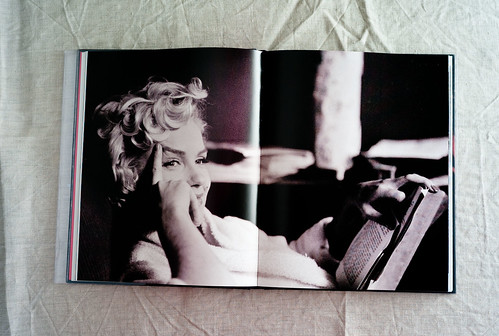
This is a photo-book from Ammo that was well received, at least in snowed-in photographer-circles. It combines a collection of very famous photographs with the contact-sheets they were picked out of.

A brief introduction of the contact-sheet for non-photographers and those who only ever used digital cameras, who might not have heard of it before. When shooting negative film, most photographers just do not have the ability to visualise the positive image when looking at the negative. So, what they do is place all the negatives from a roll of film directly on a piece of photo-paper and make print of that. It is called a contact-sheet because the negatives are in contact with the photographic paper.

In the book each final print is paired with it's contact sheet. Shown above is Elliott Erwitt's photograph of Marilyn Monroe. You can see his selection process right on the contact sheet; marking the frames he likes and picking those to enlarge. Final selection would of course be made from the enlargements. As you see, the picture marked as "#1" wasn't the final pick.

I just wanted to show a 'contact sheet' from a large-format photographer too. Much of early large-format photography was only ever contact-copied, although it obviously holds up to much greater enlargements than 35mm does. But you get to see two alternative views of the famous photograph of "Case Study House #22".

Each photograph is accompanied by a brief biography of the photographer and an equally brief story about the photograph. In case you don't read the Queens, it is also provided in French, German and Spanish. It is a nicely bound book, with good quality paper and quite decent reproductions. Its main features are the range of photographers, 44 in total, and the insight into their work you get from seeing all the pictures they didn't pick.


No comments:
Post a Comment